Remember that first time when you heard a handpan? That ethereal, otherworldly sound? It's enough to make anyone want to pick one up and start playing. The handpan is not just an instrument; it’s an experience. And while the allure of solo melodies is undeniable, the real magic happens when you start exploring handpan drum chords.
Now, I know what you're thinking: "Chords? On a handpan? Isn't it just supposed to be melodic?"
Trust me, I get it. But believe me, learning chords opens up a whole new dimension of musical expression. You'll start to create richer, more complex soundscapes, and your playing will take on a depth you never imagined possible.
Did you know that in 2023 alone, searches for “handpan classes near me” surged by 48% in the US? This growth reflects the rising interest in mastering the art of handpan music.
This guide is for all you aspiring handpan players out there, ready to take that next step. So grab your handpan, get ready to experiment, and let's dive in!
Drum Chords in Music Production: Why They Matter
You might be wondering, 'Why do I need to worry about drum chords on a handpan? It's not like I'm playing the piano!'
But here's the thing: chords are the foundation of music. Whether you're playing a melody on a violin, strumming a guitar, or, yes, even playing a handpan, understanding how chords work will deepen your musicality in ways you never imagined.
Playing single notes is like having a conversation in whispers. It's beautiful, but limited. But when you start playing chords, it's like opening up your voice, adding layers of richness and emotion to your music. It's like the difference between speaking and singing.
In genres like jazz and even some contemporary electronic music, drum chords are a cornerstone. They add a harmonic depth that elevates the music from simple rhythms to something truly captivating. So, even if you're not aiming to become a jazz virtuoso, understanding how to play chords on your handpan will give you a powerful tool for creating more expressive and nuanced music.
Why Learning Drum Chords is Beneficial
Unlock Your Creative Potential: Learning chords opens up a whole new world of musical expression. You'll find yourself experimenting with new harmonies, improvising more freely, and composing more intricate pieces.
Elevate Your Solo Performances: Imagine playing a solo piece and introducing a simple chord. Instantly, your music gains depth and complexity. It becomes a more dynamic and engaging performance.
Seamlessly Blend with Others: Drum chords are the foundation of any ensemble. When you understand how to play chords on your handpan, you can seamlessly integrate with other musicians, creating a richer and more cohesive sound.
Take Your Playing to the Next Level: If you're serious about improving your handpan skills, mastering chords is an absolute must. It's an investment in your musical growth that will undoubtedly pay off.
Know Handpan Drum Chords
Drum Chords 101: Their Essential Role in Music
Let's get down to brass tacks; what exactly are handpan drum chords?
Simply put, they're the magic that happens when you strike multiple notes together instead of playing them one at a time. It's like adding a layer of richness and depth to your music. Instead of just playing a single melody, you're creating a mini-harmony within each note.
The handpan, with its beautifully tuned notes arranged in a circle, is a fantastic instrument for exploring these chord possibilities. It's like a mini-orchestra in your hands!
Drum Chords: Song Structure Nexus
Drum chords influence the structure of songs by balancing rhythm and harmony. For example:
-
Introductory Chords: Set the tone of the piece.
-
Bridge Chords: Transition between sections seamlessly.
-
Closing Chords: Provide a satisfying resolution.
How Drum Chords Enhance Musicality
You're playing a melody, maybe a simple tune you've been practicing. It's nice, sure, but it feels a bit...flat. Now, try adding a chord underneath. Suddenly, the music comes alive. It gains the depth, this richness you didn't know was possible.
That's the power of drum chords. They add a whole new dimension to your playing. You can start experimenting with syncopation, playing rhythms that overlap and create intricate patterns.
And let's be honest, who doesn't want to sound like their favorite handpan artists? Those guys aren't just playing single notes; they're weaving intricate chord patterns into their music. Famous handpan compositions like Celtic Flow showcase the power of well-placed drum chords in creating mesmerizing patterns.
So, if you're ready to take your playing to the next level and unlock your inner musical genius, it's time to start exploring drum chords. Trust me, it's worth the effort.

Understanding Handpan Scales, Chords, and Tabs
-
Handpan Scales: These define the arrangement of notes. Popular scales include D minor, Celtic, and Hijaz. For beginners, the D minor scale offers a balanced mix of simplicity and emotional depth.
-
Handpan Chords: Chords combine multiple notes to form harmony. For instance, a D minor chord includes the notes D, F, and A.
-
Handpan Tabs: Tabs are musical notations that guide players on note progression, making it easier to practice chord sequences.
Success in Breakdowns: Wholesome Tips and Techniques
Gaining Insights from Industry Professionals
Let's be honest, sometimes you hit a wall. You're practicing, you're dedicated, but your playing feels stagnant. The same old licks, the same old patterns... It's frustrating, I know. But don't worry, you're not alone!
This is where the real growth happens – when you tap into the wisdom of the masters.
Seasoned handpan players have walked this path before. They've faced the same challenges, conquered the same plateaus. They've developed unique techniques, discovered hidden musical treasures, and honed their craft over years of dedicated practice.
The best way to connect with industry professionals is through social media, forums, in-person meetings. You can join Sound Artist Music and Handpan School classes and gain expert insights that make learning easier and fun!
Creating Breakdowns: Blending Skill and Artistry
Okay, let's talk about breakdowns. Now, this isn't just about slowing down the tempo – though that can definitely be part of it. A real breakdown is where you take the music apart, piece by piece, and rebuild it into something new and exciting.
Here you're taking the familiar elements of your song – the melody, the rhythm – and presenting them in a fresh, unexpected way. Maybe you isolate a single note, let it resonate, and then build back up to full force. Or perhaps you create a rhythmic loop and let the audience get lost in the groove before exploding back into the main melody.
The key here? Intuition. There are no hard and fast rules. It's about listening to the music, feeling the flow, and letting your creativity guide you. Experiment, play around, and see what magic you can create. You might surprise yourself with what you come up with!
Breakdowns: The Role of Drum Chords
Mastering how to use chords during these breakdowns is a crucial skill for any serious handpan player. It allows you to manipulate the listener's emotions, control the flow of the music, and create truly unforgettable moments in your performances.
It is like a storyteller pausing for dramatic effect. The melody might disappear, the rhythm might become more sparse, but the chords remain, creating a powerful emotional landscape.
Coordination: Unifying the Symphony of Instruments
Playing with other musicians is where the real magic happens. But making music together isn't always as easy as it sounds. That's where understanding drum chords comes in.
Drum chords provide a common ground, a shared language, that allows all the instruments to weave together seamlessly. Whether you're playing with a small group or a full-blown band, understanding how chords function is crucial for creating a cohesive and truly satisfying musical experience.
Drum Chords: Balancing the Musical Mix
Handpan drum chords are like the rhythm section of a band, holding everything together. They add depth and richness, creating a fuller, more balanced sound. It's like the difference between listening to a solo voice and hearing a full choir – the harmonies add a depth and complexity that elevates the entire performance.
Deep-Dive into Handpan Drum Chords Progressions
Alright, let's get real. Chord progressions are like the secret sauce of music. They're what give a song its personality, its soul, you know?
Demystifying Chord Progressions: A Step-by-Step Guide
Now, I know "chord progressions" can sound intimidating, like some kind of magical musical formula. But trust me, it's simpler than you think. At its core, a chord progression is just a series of chords played one after the other. That's it! Here’s a simple progression for beginners:
-
Start with a D minor chord.
-
Transition to an F major chord.
-
Move to an A minor chord.
-
Resolve with a G minor chord.
Practice this sequence to build familiarity and confidence.
The trick is to learn how to smoothly transition between those chords, to make them flow together naturally. It's like learning to dance – you need to find the right rhythm and timing.
How Chord Progressions Shape a Song
Think about your favorite songs. Do you notice how the mood shifts and changes throughout? That's the power of chord progressions in action.
A simple example: a major chord progression often creates a sense of happiness and optimism. On the other hand, a minor chord progression can evoke feelings of sadness or longing.
You can use chord progressions to build tension and release, to create a sense of anticipation, or to bring the listener to a satisfying conclusion. It's like painting with sound, using chords to create different colors and textures in your music.
Emotional Resonances of Chord Progressions: Intriguing Connection
Chord progressions aren't just a bunch of notes strung together – they have the power to evoke deep emotions.
-
A major chord progression can make you feel like you're soaring on a cloud.
-
A minor chord progression can make you feel like you're walking through a misty forest.
-
A sudden shift to a dominant chord can create a sense of drama and anticipation.
Learning to recognize and utilize these emotional resonances is like unlocking a secret code. You can use chords to tell stories, to express your feelings, to connect with your listeners on a deeper level.
Conclusion
So, there you have it. You've taken the first steps on the path to mastering handpan drum chords. Now, remember, this isn't a race. It's about the journey.
But here's the thing: learning a new instrument, especially one as unique as the handpan, can feel a bit overwhelming. That's where we come in. At Sound Artist Music and Handpan School, we offer a supportive and inspiring learning environment where you can explore the world of handpan chords with experienced instructors.
Ready to master the handpan? Join our beginner-friendly handpan classes and start your journey today!
Ready to take your handpan playing to the next level? Contact us today to schedule a free consultation and discover the joy of playing handpan chords with us.


